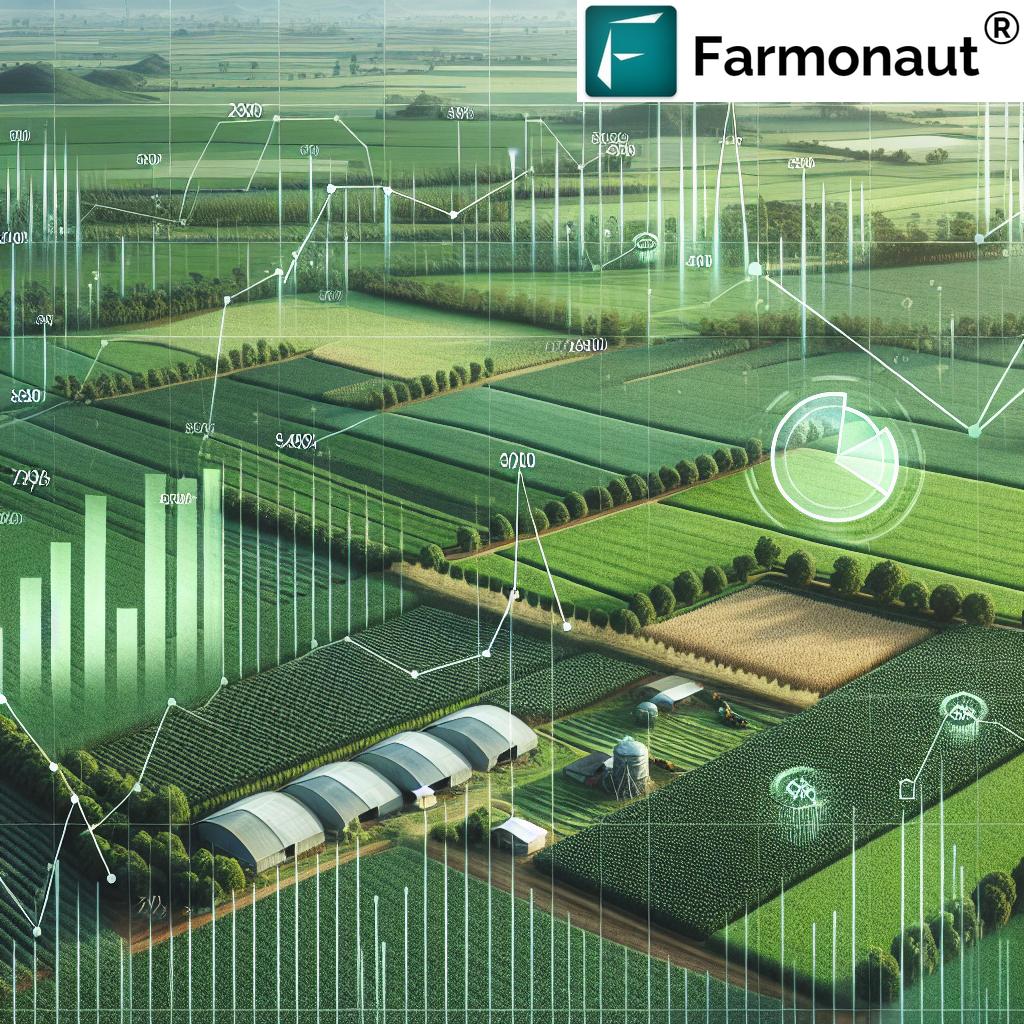Domestic Water Buffalo: 7 Farm Tips for Sustainability (2026 Edition)
“Water buffaloes can produce up to 15 liters of milk daily, supporting both family nutrition and rural dairy markets.”
Summary: The Role of Domestic Water Buffalo Farming in Sustainable Agriculture and Rural Livelihoods in 2025–2026
As we transition into 2026 and beyond, domestic water buffalo farming stands out as an essential pillar of sustainable agriculture, economic resilience, and community empowerment, particularly across Asia, Africa, and emerging global markets. Smallholders and rural communities rely on the water buffalo farm not only for high-quality milk but for supporting allied industries, generating rural livelihoods, and underpinning regional economies.
Through a deep understanding of cow and buffalo dynamics, innovative dairy production systems, direct-to-consumer buffalo farmers markets, and environment-forward farming practices, the sector continues to evolve in response to modern challenges and consumer demand. Technologies like Farmonaut play a pivotal role in delivering real-time monitoring, AI-based advisory, and resource management for sustainable farms, maximizing yields and ensuring quality.
Why Domestic Water Buffalo Are the Cornerstone of Sustainable Agriculture
Understanding the Asset Value of Water Buffalo Farms
The domestic water buffalo (Bubalus bubalis) has long been an agricultural asset in tropical and subtropical environments where cows may be less productive. Their adaptability makes them uniquely suited to waterlogged rice fields across India, Southeast Asia, and other regions where cows face challenges from climate, parasites, and feed scarcity.
- Higher disease resistance: Buffaloes are robust and less susceptible to common bovine illnesses, minimizing farm risk and promoting lasting herd health.
- Efficient fodder utilization: Unlike cows, buffaloes thrive on coarse feed from rice straw and crop residues, fitting well into organic and low-input systems.
- Eco-friendly farm integration: Buffaloes are invaluable for wetland cultivation and low-impact tillage, preserving soil structure and landscape integrity.
In 2026, as climate unpredictability reshapes agriculture, the significance of water buffaloes as a resilient, sustainable livestock choice only strengthens.
7 Sustainable Farm Tips for Domestic Water Buffalo Success
To propel domestic water buffalo farming into a more sustainable and profitable future, adopting the following strategies ensures better yields, healthier herds, reduced environmental footprint, and improved rural livelihoods.
These practical tips integrate the latest technology and proven organic practices for 2026 and beyond:
“Adopting sustainable buffalo farming can increase farm income by up to 30% by 2025 in rural communities.”
1. Optimized Feed and Nutrition Plans
- Precision nutrition: Modern buffalo dairy farms are leveraging satellite and AI-based systems to calculate exactly what their buffaloes require, accounting for age, activity, and lactation. Utilizing Farmonaut’s large scale farm management platform, farmers access custom nutrition plans and monitoring data to improve milk yield.
- Diversify feed sources: Integrate protein-rich crops like legumes, and supplement with mineral-balanced feed mixes to enhance productivity and milk quality.
- Local fodder cultivation: Growing fodder on-farm reduces dependence on external inputs and builds resilience.
These practices lead to higher milk output and healthier buffaloes—a cornerstone of sustainable agricultural systems.
2. Rotational Grazing and Organic Fodder Cultivation
- Rotational grazing systems actively improve soil health and contribute to higher resistance against pests and diseases in pastures, as buffaloes are moved daily or weekly across plots.
- Regenerating land: By resting each grazing section, land recovers, sequesters carbon, and diversifies vegetation—key for climate adaptation.
- Organic fodder production: Using organic compost, including buffalo dung, to fertilize fields ensures eco-friendly feed supply.
Rotational grazing not only maximizes available fodder but also ensures sustainability, a rising priority for consumer markets and international dairy demand.
3. Efficient Water Management Practices
- Use recycled water for washing sheds and maintaining wallows, minimizing freshwater consumption.
- Implement rainwater harvesting systems. Store runoff from roofs or paved areas in lined ponds for use during dry spells, providing reliable resources for both buffalo and cows.
- Prevent waste and pollution through lined manure pits and strategic water flow planning.
- Leverage AI-driven monitoring (from platforms like Farmonaut) to optimize irrigation and detect water shortages in grazed areas, protecting pasture productivity.
Efficient water use is indispensable for climate resilience, maintaining the productivity of the water buffalo farm year-round.
4. Improved Breeding and Health Monitoring
- Genetic selection: Adopting improved breeding techniques, such as artificial insemination and performance recording, raises average yield and increases disease resistance in buffalo stock.
- Health tech: Advanced health monitoring—increasingly powered by digital solutions and AI—enables early disease detection, precision vaccination, and tailored nutrition.
- Benefit from Farmonaut’s farm fleet management tools for organized health schedules, resource allocation, and reducing operational costs.
- Emphasize regular vet check-ups and digital recording of medicine/vaccine regimes for every animal.
These approaches drive productive, high-yield buffalo herds and reinforce the farm’s resilience against market fluctuations and biological risks.
5. Waste Recycling and Biogas Generation
- Manure management: Processing buffalo dung into organic fertilizers boosts on-farm nutrient cycling and avoids synthetic chemical use, central to organic certification.
- Biogas production: Simple digesters convert manure and waste into clean energy, meeting much of a rural household’s cooking and lighting needs while cutting methane emissions.
- Sell excess organic compost to local markets, creating a new income stream.
- Explore solutions, like Farmonaut’s carbon footprinting feature, to track and showcase your farm’s positive environmental impact.
Waste recycling streamlines farm management, enhances environmental practices, and unlocks opportunities for climate-smart branding to conscious consumers.
6. Cow and Buffalo Integration for Farm Resilience
- Strategic livestock mixing: Raising cows and buffaloes together enhances farm output and risk management. In years where roughage is scarce or climate is harsh, buffaloes’ robustness ensures continued milk supply.
- Resource optimization: Allocate specific pastures and feed rations based on species’ dietary needs, leveraging cows for higher yield and buffaloes for richer milk products like mozzarella, paneer, and ghee.
- Labor timing: Labour divisions by species make farm operations smoother and increase worker efficiency.
This integration strategy stabilizes income across seasons, diversifies market options, and boosts overall system sustainability for rural families.
7. Direct-to-Consumer Buffalo Farmers Markets
- Diversify sales channels through active participation in neighbourhood buffalo farmers markets, offering fresh milk, yogurt, paneer, and value-added dairy products.
- Leverage online registration and supply chain traceability tools, such as Farmonaut’s blockchain-based traceability feature, to guarantee authenticity for conscious shoppers and premium buyers.
- Partner with local groceries or create a “buffalo milk farm near me” brand, using social media to increase urban-rural connections and customer awareness.
- Educate consumers on the nutrition and benefits of buffalo milk over alternatives, emphasizing its richness in fat, protein, and minerals.
This approach increases farmer profitability, allows market flexibility, and fosters rural entrepreneurship.
Comparison Table: Sustainable Practices and Estimated Outcomes
| Farm Tip | Description | Estimated Environmental Impact | Estimated Economic Benefit | Rural Livelihood Improvement |
|---|---|---|---|---|
| Optimized Feed & Nutrition | Balanced, AI-designed rations, in-farm feed production | Reduces methane/animal by up to 12%; cuts external feed transport emissions | Up to 18% increase in milk yields; lower feed costs | Better health, job creation in feed/crop management |
| Rotational Grazing | Intensive pasture rotation/resting | Improved soil, up to 30% higher carbon sequestration & less soil erosion | Lowers pasture replanting costs, enhances fodder growth | Reduces workload, fosters sustainable labor cycles |
| Water Management | Rainwater harvesting, efficient use, recycling | Saves up to 35% on water/yr; lowers pollution risks | Reduces utility costs, minimal drought loss | Protects communal water resources, ensures farm stability |
| Breeding & Health Monitoring | AI tracking, better genetics, regular vet checks | Stronger, disease-resistant herds; less antibiotic runoff | Higher herd value, better long-term returns | Upskilling vets, tech-savvy youth employment |
| Waste Recycling & Biogas | Composting, biogas digesters | Reduces GHG by up to 32%; zero waste to landfill | Adds income via compost sales & cuts energy bills | Jobs in waste handling, improved rural energy access |
| Cow & Buffalo Integration | Dual species for risk spread & output diversification | Maximum utilization of land, feed; lower overall input waste | Consistent income, premium product offerings | Broad skills, more local jobs, food security |
| Buffalo Farmers Markets | Direct sales, value-added dairy, traceability | Cuts emissions from long-distance transport | Up to 30% higher profits vs. bulk selling | Boosts entrepreneurship, keeps profits in community |
Opportunities and Challenges for Domestic Water Buffalo Farms
Major Opportunities in 2026 & Beyond
- Exploding consumer demand for creamy, nutrient-rich buffalo milk products in urban markets and among health-conscious buyers worldwide
- Policy incentives: More governments are supporting rural dairy start-ups, offering grants for sustainable technology adoption
- Climate resilience: Buffaloes’ resistance to heat and ability to utilize coarse, low-quality fodder make them ideal for farming in areas with increasing climate stresses
- Organic certification: Growing demand for “pure” and traceable buffalo milk and ghee in premium export markets
- Bioenergy and fertilizer: Income opportunities in biogas and organic compost, especially where energy access is limited
- Financial services: Farmonaut’s crop loan and insurance verification helps reduce risks and enable access to new funding sources
Key Challenges for Buffalo Farmers
- Limited access to vet and breeding services or advanced genetics in remote regions
- Market volatility: Global price fluctuations and seasonal oversupply may impact farm incomes
- Infrastructure needs: Inadequate chilling or processing equipment can affect milk quality
- Awareness gap: Some rural families lack training in advanced management and sustainable practices
- Land competition: Urban sprawl or monoculture cropping can threaten grazing/permanent pasture lands
Solutions include adoption of smart farming platforms like Farmonaut for real-time resource management, environmental impact monitoring, and traceability to access premium markets and comply with policy.
How Advanced Technology Like Farmonaut Empowers Sustainable Buffalo Farming
As the sector advances, technology is central to meeting the sustainable goals of domestic water buffalo farming. Here’s how Farmonaut’s satellite technology platform supports farmers and rural entrepreneurs:
- Satellite Crop and Pasture Monitoring: Our satellites provide multispectral images to assess buffalo pasture health, spot drought or pest risk, and monitor waterlogged fields, ensuring optimal fodder production and efficient use of land.
- AI-Based Advisory (Jeevn AI): We offer real-time weather, growth, and resource management advice—essential for planning irrigation, feed, and disease interventions. This supports higher yield and better herd health.
- Blockchain Traceability for Dairy Value Chains: Our systems enable reliable “buffalo milk farm near me” branding with full traceability—critical for accessing conscious urban and export markets.
- Environmental Impact Tracking: We help farmers manage their carbon footprint, quantify sustainability, and access climate markets (for example, carbon credits).
- Fleet and Resource Management: Our digital tools streamline the use of tractors, equipment, and logistics, reducing costs and boosting operational efficiency on both small and large water buffalo farms.
- Rural Digital Inclusion: Easy-to-use mobile and web apps (see top of page for links) bring advanced technology directly to rural households, helping smallholders thrive.
- API Access & Integration: Third-party developers and cooperatives can utilize our API (see API details, read the documentation) for custom farm management solutions or farmer support tools.
These tools allow farmers to make data-driven decisions, comply with sustainability policies, and deliver transparent supply chains to consumers globally.
Frequently Asked Questions (FAQ) about Domestic Water Buffalo Farming
-
What makes domestic water buffalo ideal for smallholder and rural farming?
Domestic water buffaloes are uniquely adapted to tropical/subtropical regions, thrive on coarse fodder, have high disease resistance, and deliver rich and nutritious milk, making them a cornerstone for sustainable, low-input systems. -
How does buffalo milk compare to cow milk in nutrition?
Buffalo milk contains more fat, protein, calcium, and minerals compared to cow milk. It is highly prized for making paneer, ghee, mozzarella, and probiotic dairy products favored by health-conscious markets. -
What are the most effective sustainable practices for buffalo farms?
Key practices include precision feeding, rotational grazing, rainwater harvesting, breeding for disease resistance, organic waste recycling, farm integration with cows, and direct-to-consumer sales strategies. -
How can technology like Farmonaut help buffalo farmers in 2026 and beyond?
Farmonaut provides satellite-based monitoring, AI-driven advisory, blockchain traceability, resource/fleet management, and environmental impact tracking—empowering farmers to increase productivity, quality, and sustainability. -
How can buffalo farmers access financial support or loans?
Modern digital platforms—like Farmonaut’s crop loan and insurance solution—provide satellite-verified documentation for easier access to bank loans and affordable insurance products in rural areas. -
Why should farmers consider buffaloes over cows in certain regions?
Buffaloes are better suited to waterlogged, rice-growing areas and climates that challenge cow health. Their adaptability and feed efficiency contribute to more resilient and profitable systems under climate change. -
Where can consumers find fresh buffalo milk and dairy products?
Look for neighborhood ‘buffalo milk farm near me’, visit local buffalo farmers markets, or check for certified online suppliers linked with transparent supply chain technologies.
Conclusion
In summary, domestic water buffalo farming continues to emerge as a cornerstone of sustainable agricultural systems, supporting dairy production, stimulating rural livelihoods, and fostering resilient economies well into 2026 and beyond. By integrating data-driven tools, regenerative grazing, water management, and circular farming, smallholders can ensure greater milk yield, superior product quality, and higher profitability. Solutions such as those provided by Farmonaut empower farmers to sustain these gains with confidence—bridging the gap between modern technology and age-old animal husbandry wisdom.
- Reimagine your farm’s future: Explore how carbon footprinting and traceability can unlock new markets for your buffalo dairy products.
- Empower your management: Harness real-time, satellite-based insights from Farmonaut’s apps and developer APIs for better decisions and sustainable growth.
By capitalizing on these seven sustainability tips, rural economies can increase incomes, nurture the environment, and secure nutritious food systems for future generations—making domestic water buffalo farming a model for global agricultural success.












